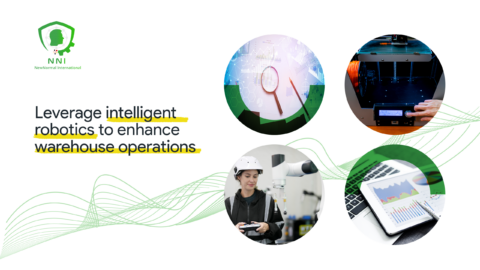Advancing Operational Efficiency through Robotics in Warehousing
In the age of rapid technological advancement, the strategy to leverage Intelligent Robotics in Warehouse Operations has become essential for businesses aiming to optimize efficiency and stay competitive. This article explores the transformative impact of intelligent robotics on warehouse management.
The Rise of Robotics in Warehouse Operations
The once static and labor-intensive environment of warehouses is undergoing a dramatic transformation driven by intelligent robotics. These advanced systems, infused with the power of artificial intelligence (AI) and machine learning (ML), are revolutionizing warehouse operations across a spectrum of tasks:
1. Inventory Management Redefined: Intelligent robots are equipped with the ability to perform real-time inventory tracking and monitoring, ensuring accurate data and preventing stockouts. This automated system eliminates manual counting errors and optimizes inventory levels, leading to improved efficiency and reduced operational costs.
2. Sorting and Packing with Precision: Intelligent robots excel at sorting and packing tasks with unmatched accuracy and speed. Their advanced vision systems and adaptive algorithms enable them to identify, categorize, and pack items flawlessly, significantly reducing handling errors and accelerating fulfillment processes.
3. Palletizing Made Effortless: Heavy lifting and repetitive palletizing tasks are relegated to the past with the arrival of intelligent robots. Equipped with advanced grippers and manipulators, these robots can effortlessly lift and stack items onto pallets, ensuring proper load distribution and stability, while safeguarding worker safety.
4. Unrelenting Efficiency and Productivity: Intelligent robots are tireless workers, operating 24/7 with unwavering efficiency. This continuous operation significantly increases productivity and throughput, enabling warehouses to fulfill orders faster and meet increasing customer demands.
5. Reduced Costs and Enhanced Profitability: Automation through intelligent robots leads to significant cost reductions across various aspects of warehouse operations. Labor costs are minimized, handling errors are reduced, and overall operational efficiency is enhanced, leading to improved profitability and a competitive edge.
6. Enhanced Worker Safety and Wellbeing: Intelligent robots alleviate workers from physically demanding and potentially hazardous tasks. This automation minimizes the risk of injuries, fatigue, and musculoskeletal disorders, creating a safer and more ergonomic work environment for employees.
7. Data-Driven Insights and Continuous Improvement: Intelligent robots generate valuable data about warehouse operations, providing real-time insights into performance, bottlenecks, and areas for improvement. This data-driven approach empowers managers to make informed decisions, optimize workflows, and continuously improve warehouse efficiency.
8. Scalability and Adaptability for Future Growth: Intelligent robots are inherently scalable and adaptable, allowing businesses to adjust their automation level based on changing needs and market demands. This flexibility ensures future-proofed operations, enabling businesses to grow and thrive in a dynamic environment.
The rise of intelligent robotics is not merely a technological advancement; it is a fundamental shift in the future of warehouse operations. By automating routine tasks, increasing efficiency, and reducing costs, these intelligent machines are paving the way for a new era of agile, resilient, and highly productive warehouses. Embrace the power of intelligent robotics and transform your warehouse into a dynamic and intelligent hub, ready to meet the demands of tomorrow and unlock unprecedented levels of efficiency and profitability.
Change Management in Robotics Integration
Integrating intelligent robotics into warehouse operations represents a major shift in traditional practices. Effective change management is crucial, involving the adoption of new technologies, restructuring workflows, and upskilling employees to work alongside robotic systems.
Executive Coaching for Robotics-Driven Leadership
Leadership plays a pivotal role in implementing robotic systems in warehouse operations. Executive coaching can empower leaders with the insights and skills needed to navigate the integration of robotics, ensuring they align with business goals and drive operational efficiency.
Effective Communication in Robotics Adoption
Effective communication is key to the successful adoption of intelligent robotics in warehouses. Clearly conveying the benefits, operational changes, and new roles to staff and stakeholders is essential for smooth transition and acceptance.
Leveraging Generative AI for Optimized Robotics Solutions
The integration of generative artificial intelligence with intelligent robotics can further enhance warehouse operations. AI algorithms can optimize robotics movements, predict maintenance needs, and improve overall system efficiency.
Conclusion Intelligent Robotics in Warehouse Operations
In conclusion, the initiative to “Leverage intelligent robotics to enhance warehouse operations” is a forward-thinking approach that can significantly improve efficiency and scalability in warehouse management. As the business world evolves, embracing these technological advancements is key to staying competitive and meeting the increasing demands of the market.
#IntelligentRobotics, #WarehouseManagement, #OperationalEfficiency, #AIinLogistics, #TechnologyInnovation











